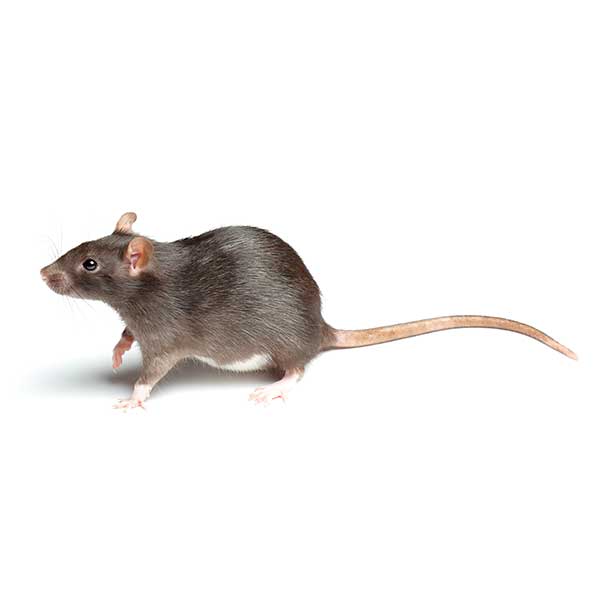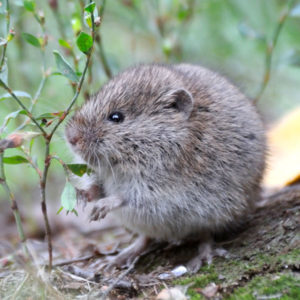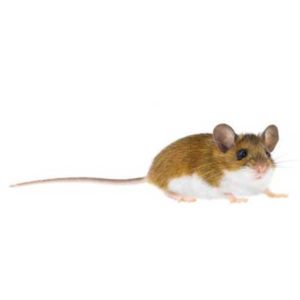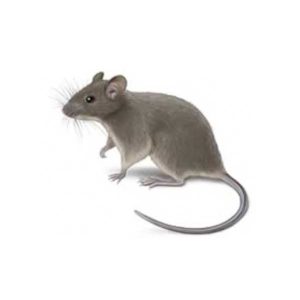Norway Rats in North Carolina
Norway rats are stocky, heavy-bodied rats and are larger and more aggressive than their cousin the roof rat or black rat. Found throughout the United States, Norway rats are commensal rodents, living near and dependent on the human habitat for survival. Norway rats will eat almost anything but prefer cereal grains, meats, fish, nuts, and some fruits. Like most rodents, Norway rats are most active an hour after sunset and just before dawn. The gnawing activity of Norway rats can cause considerable damage to homes, gardens, and structures. Norway rats are carriers of serious diseases, including jaundice, rat-bite fever, and salmonella.
Signs of a Norway Rat Infestation
Signs of a Norway Rat infestation include the presence of droppings, which are capsule-shaped and approximately 3/4 inch long. You may also notice gnaw marks on wood, plastic, and other materials. Norway Rats tend to leave greasy rub marks along walls and baseboards due to their oily fur. Burrows around building foundations, under rubbish piles, and in dense vegetation indicate their presence. Additionally, hearing scratching or scampering noises, particularly at night, can signify an infestation.
Habitat, Diet, Life Cycle & Behaviors
Where Do Norway Rats Live?
Norway rats prefer to live in close proximity to humans and are often found in urban and suburban areas. They create burrows in the ground, typically near building foundations, under debris, or in overgrown areas. Inside buildings, they are commonly found in basements, crawl spaces, and wall voids.
In general, Norway rats are ground burrowing animals and construct burrows that are 2 to 3 inches in diameter and up to 6.5 feet in length. Burrows are constructed outdoors beside foundations and gardens. Norway rats are nocturnal and will enter homes at night in search of food, returning back to their burrow. If nests are found inside homes, they are typically in basements and crawl spaces. If a population is large, Norway rats will nest in upper areas of a home or structure.
Diet
Norway rats are omnivorous and will eat a wide variety of foods. They prefer cereals, grains, meats, fish, nuts, and fruits. In urban areas, they scavenge food from garbage and pet food left outdoors. Their opportunistic feeding habits make them highly adaptable to different environments.
Life Cycle
Female Norway rats can produce up to 7 litters per year, with each litter containing 6 to 12 young. The gestation period is about 21 to 23 days, and the young are weaned by three to four weeks old. Norway rats reach sexual maturity at about three months of age and can live up to one year in the wild, although they may live longer in controlled environments.
Behaviors, Threats, or Dangers
Norway rats can damage foundations, slabs, garden crops, and plants as they burrow and gnaw to find food and shelter. Inside homes, Norway rats may cause extensive damage when nesting in walls and attics. Accounts of rodents starting fires through the gnawing of electrical wires have been widely reported. Chewed, exposed wires inside walls can spark, causing interior walls to catch fire. When foraging for food, these rats consume and contaminate food meant for humans, pets, and livestock. Salmonella, leptospirosis, and rat-bite fever are among the dozens of diseases spread by Norway rats.
If you suspect a Norway rat issue, contact your local rodent exterminators.
How to Get Rid of Norway Rats?
To get rid of Norway rats, start by eliminating their food sources and nesting sites. Secure garbage bins, remove pet food from outdoor areas, and keep food in sealed containers. Use traps and baits strategically, placing them along known rat pathways. For extensive infestations, it is advisable to consult a professional pest control service for effective and safe removal.
Norway Rat Prevention Tips
Keeping Norway rats away from your property involves maintaining a clean and secure environment. Regularly inspect and seal potential entry points, such as foundation cracks, vents, and around utility pipes. Keep your property clean and free of food debris, and store food in airtight containers. Eliminate clutter and debris around the property to reduce potential nesting sites. Regular maintenance and sanitation are key to keeping Norway rats at bay.
Need help with Norway Rats control?
FAQs
What is the Difference Between Norway Rats and Regular Rats?
Norway rats, also known as brown rats or sewer rats, are larger and more robust than other common rat species, such as the roof rat. They have shorter tails relative to their body length, smaller eyes and ears, and a more substantial build. In contrast, roof rats are smaller and more slender, with longer tails and larger eyes and ears.
What is the Norway Rat Known for?
The Norway rat is known for its adaptability and survival skills in various urban environments. It is notorious for its burrowing and gnawing habits, which can cause extensive structural damage. Additionally, it is a carrier of numerous diseases that can pose serious health risks to humans.
How Big Can a Norway Rat Get?
Norway rats can grow quite large, with adults typically measuring between 7 and 9.5 inches in body length, not including their tail, which can add another 6 to 8 inches. They can weigh from 12 to 16 ounces, making them one of the largest common rat species.




